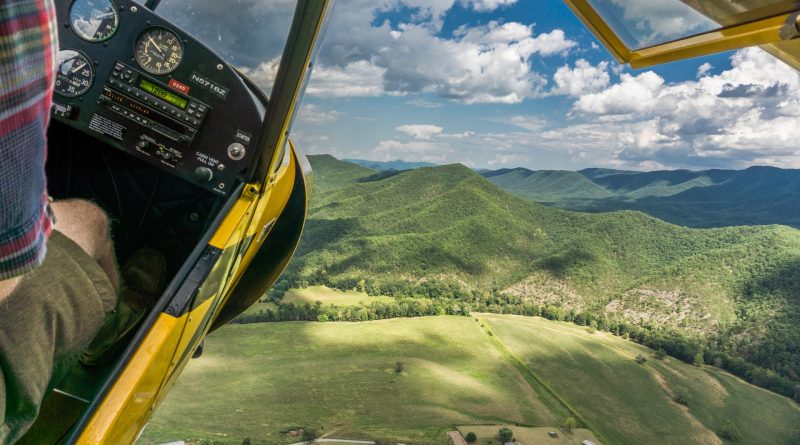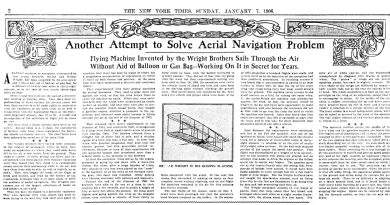Flying Taxis Are Here: Joby Aviation’s eVTOL Lights Up New York’s Skyline
Joby Aviation, a prominent player in the development of electric vertical take-off and landing (eVTOL) aircraft, recently showcased its electric air taxi in New York City. This significant event took place on November 12, 2023, at the Downtown Manhattan Heliport. The demonstration marked a notable milestone in urban air mobility, as it was the first instance of an electric air taxi flight in New York City and also marked the first time Joby Aviation conducted a flight in an urban environment.
The electric air taxi by Joby Aviation is a five-seat aircraft, embodying the potential future of urban transportation. This inaugural flight in Manhattan’s airspace signifies a step towards a new era in urban travel, with electric air taxis offering a sustainable and efficient alternative to conventional ground transportation. Joby Aviation’s achievement in flying the eVTOL in New York City serves as a testament to the company’s commitment to revolutionizing urban mobility through electric aviation.
Joby Aviation is targeting a launch for these electric air taxis in 2025, aiming to provide commercial passenger service with these innovative aircraft. This initiative reflects a broader movement towards embracing electric aviation and its potential benefits in terms of efficiency, environmental sustainability, and transformation of urban landscapes.
Joby Aviation
Joby Aviation is an American aerospace company that specializes in developing electric vertical take-off and landing (eVTOL) aircraft. The company was founded in 2009 by JoeBen Bevirt, an entrepreneur and inventor with a vision to revolutionize personal mobility. Joby Aviation is headquartered in Santa Cruz, California, and has become a prominent player in the emerging urban air mobility industry.
The company’s main focus is on developing and commercializing eVTOL aircraft, which are designed to offer a sustainable and efficient alternative to traditional ground transportation, particularly in congested urban environments. These electric aircraft are capable of vertical takeoff and landing, making them suitable for use in densely populated areas where space for runways is limited.
Joby Aviation’s eVTOL aircraft is known for its innovative design, which includes multiple rotors for vertical lift and a sleek, aerodynamic body for efficient forward flight. The aircraft is designed to be quiet, fast, and emission-free, aligning with the growing demand for environmentally friendly transportation solutions.
In addition to its technological advancements, Joby Aviation has been active in shaping the regulatory landscape for eVTOLs and urban air mobility. The company has engaged in various partnerships and collaborations with other industry leaders, regulatory bodies, and local governments to ensure the safe and effective integration of eVTOLs into existing transportation systems and airspaces.
Overall, Joby Aviation is seen as a pioneer in the field of electric aviation, pushing the boundaries of what is possible in personal and urban transportation. With a strong focus on innovation, sustainability, and safety, the company is at the forefront of creating a new mode of transportation for the future.
eVTOL Functionality
Joby Aviation’s eVTOL aircraft represents a blend of aviation innovation and electric vehicle technology, tailored for urban air mobility. Its design allows for vertical take-off and landing, akin to a helicopter, which is crucial for operation in urban environments where space for runways is scarce. This capability is enabled by multiple electric-powered rotors strategically positioned across the aircraft. Unlike traditional helicopters, the eVTOL uses electric propulsion, which is quieter and more environmentally friendly.
The aircraft transitions from vertical lift to forward flight through the tilting of its rotors, combining the efficiency of an airplane with the versatility of a helicopter. This transition is a key feature that differentiates it from conventional aircraft. The use of electric propulsion not only reduces noise pollution but also significantly cuts down on carbon emissions, aligning with growing environmental sustainability goals.
Another distinctive aspect of Joby Aviation’s eVTOL is its emphasis on safety. The aircraft is designed with multiple redundancies in key systems like propulsion, power supply, and navigation, ensuring reliability and safety. Advanced navigation systems and automated flight technologies further enhance its safety profile, making it suitable for densely populated urban areas.
Overall, Joby Aviation’s eVTOL is characterized by its unique combination of vertical take-off and landing capabilities, electric propulsion, reduced noise footprint, and a strong focus on safety. These features make it a pioneering aircraft in the realm of urban air mobility, offering a glimpse into the future of city transportation.
Battery and Propulsion
Joby Aviation’s progress in electric vertical take-off and landing (eVTOL) aircraft is deeply intertwined with advancements in battery technology and electric propulsion, two critical areas for the viability and efficiency of these aircraft.
In the realm of battery technology, Joby Aviation has focused on developing and utilizing high-energy-density batteries. These batteries are crucial for eVTOLs, as they need to be powerful enough to ensure sufficient range and flight time, yet light enough not to hinder the aircraft’s performance. Joby’s advancements likely involve improving the energy-to-weight ratio of batteries, enhancing their efficiency, and ensuring their safety and reliability, especially under the demanding conditions of flight.
Regarding electric propulsion, Joby Aviation has made strides in creating propulsion systems that are not only efficient but also significantly quieter than traditional aircraft engines. The development of these electric motors involves optimizing their power output while minimizing their size and weight. This is vital for eVTOLs, as the propulsion system needs to provide enough thrust for vertical take-off and landing as well as for sustained horizontal flight. The quieter operation of these electric motors is a key factor in making eVTOLs more acceptable for urban environments, addressing one of the biggest challenges of integrating aircraft into cityscapes – noise pollution.
Together, these advancements in battery technology and electric propulsion are fundamental to the operation of eVTOLs, enabling them to be a practical and sustainable solution for urban air mobility. Joby Aviation’s work in these areas not only enhances the performance and efficiency of their eVTOL aircraft but also contributes to the broader field of electric aviation.
From Sci-Fi To Reality
The concept of eVTOLs (electric vertical take-off and landing vehicles) and similar aircraft originally appeared in science fiction before becoming a technological reality. Science fiction has long been a genre that imagines and explores futuristic technologies, and flying vehicles capable of vertical takeoff and landing have been a staple in this realm for decades.
In many science fiction stories and films, these types of vehicles were envisioned as a common mode of transportation in futuristic or alien societies. They often featured in urban settings, suggesting a vision of cities where air travel was as routine as driving a car. These vehicles varied from personal flying cars to larger, more public forms of transportation.
While the eVTOLs in science fiction were not always depicted as electric – with many early imaginings powered by unspecified or fictional energy sources – the core idea of compact, versatile, and efficient airborne vehicles aligns closely with the goals of modern eVTOL designs. The transition from these science fiction concepts to real-world prototypes and designs reflects the progress in technology, especially in fields like battery storage, electric propulsion, and advanced materials.
Thus, while the specific concept of electrically powered VTOLs might not have been explicit in early science fiction, the genre certainly laid the groundwork for imagining and conceptualizing the kind of versatile, urban-friendly aerial vehicles that companies like Joby Aviation are now working to make a reality.
Significance For Jetpack Development
The significance of Joby Aviation’s development of electric vertical take-off and landing (eVTOL) aircraft in relation to jetpack development is subtle yet important. While eVTOLs and jetpacks are different in their design, purpose, and target market, the technological advancements and regulatory progress made by companies like Joby Aviation can indirectly influence the field of jetpack development.
Firstly, the technological breakthroughs in eVTOLs, such as efficient electric propulsion systems, advanced battery technology, and sophisticated flight control software, are pivotal in the realm of personal aviation. These advancements could eventually trickle down to smaller-scale personal flight devices like jetpacks, offering improvements in power, safety, and control.
Secondly, the regulatory pathways that Joby Aviation navigates for the safe integration of eVTOLs into urban airspaces could lay the groundwork for future personal aviation devices, including jetpacks. By establishing standards for safety, noise, and air traffic management for eVTOLs, Joby Aviation helps to pave the way for the regulatory acceptance of various forms of urban air mobility, including more personal or individual devices.
Finally, the public’s reception of eVTOLs, as they become more common in urban environments, will also impact the development of jetpacks. If eVTOLs are accepted and prove to be safe and efficient, it could increase public interest and investment in personal aviation technologies, potentially accelerating the development of jetpacks.
In summary, while Joby Aviation’s eVTOLs and jetpacks are distinct, the advancements in technology and regulatory frameworks made by eVTOL development could indirectly benefit and shape the future of jetpacks and other personal aviation technologies.
Conclusion
The development of eVTOLs (electric vertical take-off and landing vehicles) and jetpacks, while distinct in their technological focus and intended use, both point towards a growing interest and investment in advanced personal and urban air mobility solutions.
One of the primary conclusions that can be drawn from the advancements in eVTOLs is the feasibility of electric propulsion in aviation. This technology, central to eVTOLs, demonstrates that electric power can be a viable alternative to traditional fossil fuels, even in the demanding context of aerial transportation. This bodes well for jetpacks, as electric propulsion could also be adapted for smaller, personal flight devices, offering a more sustainable and potentially quieter option compared to jet fuel or other combustion engines.
Both eVTOLs and jetpacks also signify a shift in the conceptualization of transportation, emphasizing three-dimensional travel as a solution to urban congestion and the limitations of ground-based infrastructure. As eVTOLs become more integrated into urban environments, they may pave the way for greater acceptance and regulatory frameworks that could also benefit jetpack development.
However, it’s also clear that eVTOLs and jetpacks cater to different needs and challenges. eVTOLs are primarily being developed for public and commercial transport, focusing on safety, reliability, and carrying multiple passengers over longer distances within or between urban areas. Jetpacks, on the other hand, are more about individual mobility, offering a unique, personal flying experience but with significant challenges in terms of safety, control, and practicality.
The progress in eVTOLs might indirectly influence jetpack technology, especially in areas like battery efficiency, aerodynamics, and flight control systems. However, the realization of jetpacks as a common mode of personal transportation still faces considerable hurdles, not least of which are safety concerns and regulatory approvals.
In summary, while eVTOLs and jetpacks represent different approaches to the future of transportation, their development reflects a broader trend towards innovative, efficient, and potentially more environmentally friendly modes of aerial travel. The advancements in one area can provide valuable insights and technologies that may benefit the other, collectively pushing the boundaries of what’s possible in personal and urban mobility.



